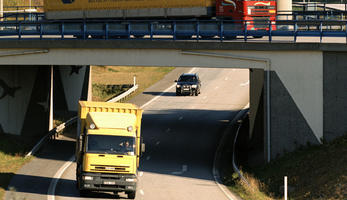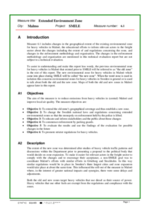Extending environmental zones for heavy goods vehicles
Thematic areas
Demand & urban space management
Summary
An effective way of reducing emissions and improving local air quality is to create and enforce environmental zones that exclude heavily polluting vehicles from the city centre. Photo credit: Mats Persson
Implementing sustainable mobility
In many areas of Malmo, ambient air quality did not meet the environmental standards established by Sweden or the EU. The creation of a new environmental zone was identified as a way of improving the situation.
The specific objectives of the measure were to extend the existing environmental zone to a larger area of Malmo; introduce stricter regulations for heavy vehicles; and enforce compliance more effectively.
Measure implementation required extensive cooperation between a variety of actors, including the municipality of Malmo, transport organisations and national government bodies.
Progress
Heavy traffic patterns were studied and the possible location of the zone and its potential environmental and economic consequences were evaluated.
The tasks involved in this measure were:
- planning the zone extension on the basis of the existing zone;
- introducing stricter regulations for heavy vehicles following consultation with national government ministries;
- disseminating information about the extended environmental zone and the stricter regulations via Internet and printed brochures;
- establishing the new zone with environmental compliance standards for heavy vehicles passing through the city centre;
- achieving changes in the law to improve surveillance, with the idea of allowing traffic wardens to supervise enforcement; and
- enforcing the new environmental zone in cooperation with the police, since it did not prove possible to change the law and extend the right to zone enforcement to other bodies.
New Swedish legislation on low-emission, or environmental, zones was passed in January 2007, and the new zone in Malmo came into effect in September 2007. The new zone is almost double the size of the previous zone and encompasses central Malmo within the inner ring road. Press releases were issued, and information brochures were distributed to the business community and haulage industry.
The measure corresponds to similar steps taken in Gothenburg, Lund and Stockholm, making compliance easier for hauliers who work throughout the country.
Outcomes
Transport companies clearly accelerated the renewal of their vehicles, and the compliance rate rose by approximately 5 percent.
In the case of nitrogen oxides, there was a reduction of 33 tonnes per year (17 percent), and for particulates, an estimated reduction of just over 1 tonne per year (30 percent).









